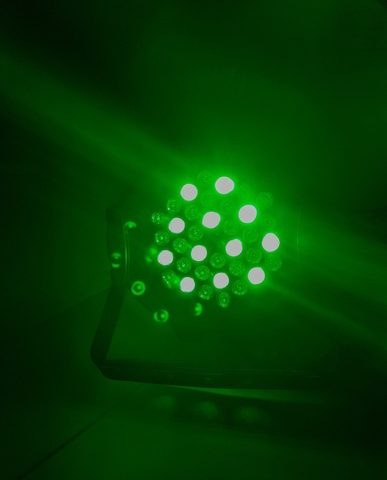Green LED (light-emitting diodes) therapy can ease pain and improve quality of life in people with fibromyalgia, a small clinical trial suggests.
While the results are preliminary, they support further investigation into green LED therapy as a possible non-pharmacological treatment for fibromyalgia and other pain-related conditions, researchers said.
The study, “Skip Nav Destination Green Light Exposure Improves Pain and Quality of Life in Fibromyalgia Patients: A Preliminary One-Way Crossover Clinical Trial,” was published in the journal Pain Medicine.
Since the causes of fibromyalgia are not understood, treatment of the condition focuses on managing symptoms, most notably pain. Yet, the side effects of existing medications and the limited benefits of physical therapy warrant new treatment strategies.
Light-based therapies have shown efficacy at treating conditions including depression and back pain. Preclinical research done in rats indicated that exposure to green light, specifically, could ease pain. Other studies have suggested that being in environments that are rich in the color green, such as forest bathing (shinrin-yoku), also may ease pain.
Now, researchers in the U.S. have reported the effects of green LED therapy on 21 people with fibromyalgia who were recruited from the University of Arizona chronic pain clinic. The participants ranged in age from 26 to 75 (average age 53.2). All but one participant were women.
In the clinical trial (NCT03677206), the participants first underwent up to 10 weeks of treatment with white LED therapy, for one to two hours per day. Then, after a two-week washout period, they were given up to 10 more weeks of green LED therapy, also for one to two hours per day, while being encouraged to engage activities such as reading or listening to music. To minimize the potential for bias, study participants were not informed about the preclinical data supporting green light therapy.
Participants self-reported using white LED therapy for an average of 1.6 hours/day, and green LED therapy for 1.45 hours/day. On average, participants crossed over from the white LED therapy after seven weeks; the most common participant-reported reason for stopping this first part of the trial early was lack of efficacy. Participants were on green LED therapy for an average of 9.37 weeks.
Results showed no significant difference in participants’ average pain (rated on a scale from 0 to 10) after white LED therapy. However, after green LED therapy, the average pain scores decreased significantly from 8.4 to 4.9.
Both white and green LED therapy resulted in improvements (decreasing scores) on the Fibromyalgia Impact Questionnaire (FIQ), a validated measure of general health status for people with fibromyalgia. Notably, while both therapies resulted in statistically significant benefits — that is, mathematically unlikely to be the result of random chance — the magnitude of FIQ improvement was substantially higher after green than white therapy. After white therapy, average scores decreased from 76.5 to 66.1; after green therapy, average scores decreased from 71.6 to 42.7.
Patients also were asked to rate the effect of each therapy on pain frequency, duration of pain episodes, ability to fall asleep, stay asleep, work, exercise, and do household chores. Across all of these measurements, green LED therapy led to significant improvements, but white LED therapy did not. Green LED therapy also led to greater improvements in quality of life than white LED, as assessed with the EQ-5D-5L survey.
“The recruited patients reported significant improvement not only in terms of their pain scores, but also with regard to their perception of their overall health,” the researchers wrote.
Eleven participants self-reported reducing their daily use of regular pain medications — including opioids — after green LED therapy. Since the patients were on a variety of medications prior to the study, and the study was fairly short, the researchers said it was difficult to directly assess changes in medication, noting a need for further investigation.
No adverse side effects related to either green or white LED therapy were reported.
“To our knowledge, this … clinical trial is the first description of a successful implementation of GLED [green LED] exposure as a therapy to manage fibromyalgia pain without any reported side effects,” the scientists wrote.
Among the study’s limitations, said the investigators, is the fact that almost all participants were women — though the researchers added that, in their animal models, green LED therapy has shown benefits regardless of sex.
“The observed safety and efficacy, coupled with the simplicity of this method, merit further investigation and the design of a randomized clinical trial to fully investigate the role of GLED for fibromyalgia and possibly other chronic pain conditions,” they concluded.

